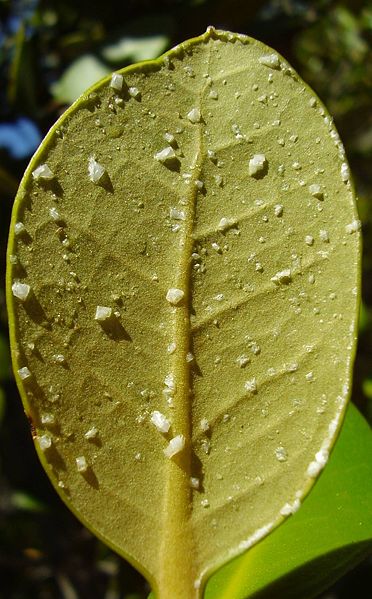
Combining Salt with a Deicing Agent
Deicing agents, such as salt brine, can be combined with salt to reduce salt distribution. This assists in limiting the amount of salt scattered onto roads, while also preventing large quantities of chloride from being released into the environment. Deicing agents also discourage ice or snow from establishing bonds with outdoor surfaces.
Mixing Salt with Abrasive Materials
Salt can be mixed with abrasive materials such as ash or sand to achieve some of the effects provided by deicing agents. However, this method is not as commonly used, as abrasive materials can be harmful to plants, and promote erosion in vehicles and structures.
Alternatives to Sodium Chloride
Alternatives to sodium chloride so you do not have to risk damaging your property:
1) Magnesium chloride
Magnesium chloride is one of the best alternatives to sodium chloride. It is effective at melting ice in temperatures down to 5°F. In comparison, sodium chloride can only melt ice and snow at temperatures above 15.8°F. Magnesium chloride is also far less harmful to plants and soil.
2) Calcium chloride
Calcium chloride is the only effective chemical compound to use when temperatures drop below 5°F. It is not as beneficial to plants as magnesium chloride, but it is still less harmful than sodium chloride.
3) Potassium chloride
Potassium chloride is a chemical compound that is often found in fertilizers. It is a rich source of potassium, but it has also been found to be mildly effective at melting snow and ice at temperatures down to 25°F. Potassium chloride is more beneficial to plants and soil than sodium chloride, but it lacks the efficacy of magnesium chloride and calcium chloride.
4) Urea
Urea is an organic compound that is synthesized from natural gas. It is used primarily in fertilizers as a nitrogen supplement, but it is also moderately effective at melting ice and snow down to 25°F. Urea is best utilized as an ice melting agent during light winters when there is little precipitation. It should not be used in great abundance, as excessive nitrogen application can create chemical imbalances in grass and soil.
5) Beet juice

Providing Your Trees with Shelter
Physical barriers can be constructed from plastic, burlap, or fencing to protect susceptible trees from salt exposure. Trees that have been insulated from salt exposure generally avoid significant salt injury.
Specially derived polymers are also available that can be applied onto tree foliage. These provide a protective barrier across the branch surface, and prevent salt from being absorbed into the leaves, needles, or buds.
Maintaining Proper Soil Structure
Applying a layer of organic material to soil assists in improving soil structure, and promoting proper soil drainage. It also helps to retain soil moisture. Trees that are rooted in healthy, nutrient rich soil are more resistant to salt exposure.
Deep Irrigation & Removing Salt Residue
If a tree develops in a setting where runoff occurs, deep irrigation can help flush salt out of the soil. When using this technique, apply two to three inches of water to the soil over a three hour period, stopping if additional runoff occurs. This treatment can be repeated once every three days if soil salinity remains high. If a tree has been coated in salt due to salt spraying or drifting, rinse the residue off of any affected branches. Repeat this treatment in early spring to prevent salt from being absorbed into any buds or leaves.
Planting Recommendations
Trees should be planted at least sixty feet away from surfaces that are frequently subjected to salt application. Salt tolerant species can be grouped together with salt sensitive species to prevent them from being exposed to salt spray. Hardy trees should be favored during planting, as they tend to be more resistant to salt injury due to their dense wood. Sensitive trees should be planted uphill where runoff is not as common. The professionals at Iron Tree Service can also help you with tree planting.

